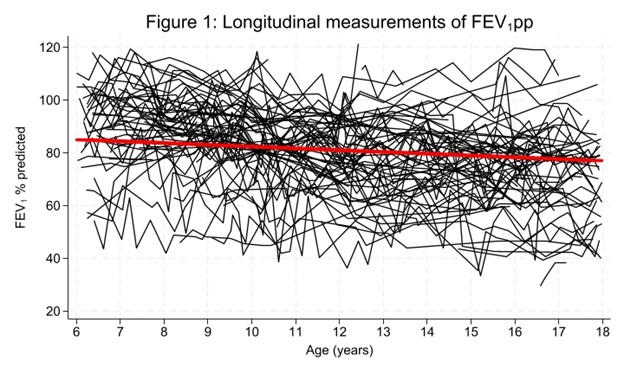Abstract
Introduction: While variability of forced expiratory volume in one second (FEV1) has been previously assessed in cystic fibrosis (CF), there is a lack of evidence in primary ciliary dyskinesia (PCD) on intra-individual variability during routine clinic visits.
Methods: This is a retrospective study of children ages 6-18 years with a confirmed diagnosis of PCD followed between 2000-2022. Only visits where patients were considered clinically stable were included in the analysis. A mixed effects model was generated with age as the time variable, random intercepts per individual, with pre bronchodilator FEV1 percent predicted (FEV1pp) and Z-scores as the outcomes.
Results: Among the 103 children included, the median follow up period was 4.8 years (IQR 2.7, 8.2) and the median time between included visits was 126 days (91, 210) (Figure 1). The median number of measurements per child was 9 (IQR 5, 18). The intra class correlation between stable visits was 0.78 (95% CI 0.73, 0.83) and 0.79 (95% CI 0.73, 0.83) in FEV1z and FEV1pp, respectively with 95% of the absolute differences between measurements expected to be less than 1.17 z-score (CR=1.17) and 14% predicted (CR=14). In this dataset, 281/1135 (25%) of the measurements changed by >10% predicted from the last visit.
Conclusion: PCD patients considered to be clinically stable, have large intra individual variability between routine clinic visits, similar to what has been previously reported in CF.
